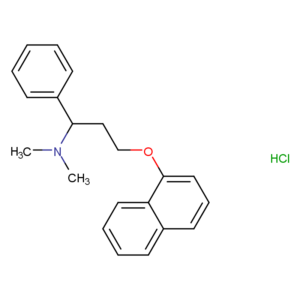What Is Dapoxetine Hydrochloride Used For?
While dapoxetine hydrochloride itself is not a finished drug, it serves as a foundational ingredient in formulations designed to address:
Premature Ejaculation (PE): As an SSRI, it helps regulate serotonin levels, potentially delaying ejaculatory reflex.
Central Nervous System Disorders: Researchers explore its utility in managing anxiety and depression, though this requires further clinical validation.
Analgesic Synergy: Emerging studies suggest its potential to enhance the effects of certain pain medications when used as an adjuvant.
Why It Matters for Drug Developers:
Purity and Stability: Our dapoxetine hydrochloride is synthesized under rigorous GMP-compliant conditions, ensuring consistent purity (≥99.5%) and shelf stability.
Versatility: Its chemical structure allows for seamless integration into various dosage forms, including tablets, capsules, and oral solutions.
Regulatory Compliance: Supported by comprehensive documentation (CoA, DMF), it accelerates the drug approval process.
Dapoxetine Hydrochloride Side Effects: Considerations for Formulators
While end-user side effects (e.g., nausea, dizziness) are well-documented in clinical literature, intermediates like dapoxetine hydrochloride pose distinct handling considerations:
Inhalation Risks: Fine powder particles may cause respiratory irritation. Use NIOSH-approved respirators during processing.
Skin Contact: Prolonged exposure may lead to mild dermatitis. Wear impermeable gloves and lab coats.
Environmental Impact: Avoid releasing into wastewater; dispose of according to local hazardous waste regulations.
Mitigation Strategies for Manufacturers:
Engineering Controls: Implement enclosed mixing systems and local exhaust ventilation.
Training: Educate staff on PPE usage and spill protocols.
Quality Testing: Regularly screen for residual solvents and impurities via HPLC or GC-MS.
Why Choose Our Dapoxetine Hydrochloride?
At Tianming Pharmaceutical, we prioritize quality, transparency, and partnership. Our dapoxetine hydrochloride is:
Professional manufacturer of APIs and intermediates: 14 years of production experience
ISO 9001:2015 Certified: Rigorous quality checks at every production stage.
Batch-Specific Documentation: Including NMR, IR, and HPLC chromatograms.
Scalable Supply: From R&D quantities to commercial-scale batches.
Collaborate With Confidence
Whether you’re developing a novel formulation or optimizing an existing one, our team of chemists and regulatory experts is here to support your journey. Contact us today to discuss your requirements or request a sample COA.
Conclusion
Dapoxetine hydrochloride is not a simple laboratory product. It is the “life link” that connects scientific research wisdom and patient needs. For researchers and pharmaceutical companies who are deeply engaged in the field of central nervous system treatment, this white crystal carries not only the molecular formula, but also the mission of pushing the boundaries of medicine. When we accurately control its synthesis process, purity threshold and ethical boundaries, we are actually forging the key to rewriting the trajectory of life.
A true breakthrough is never a solitary battle. Choosing a partner is like choosing a comrade-in-arms to fight side by side. You need not only suppliers that meet the standards, but also long-term partners. When demand and expertise collide, it is the beginning of cooperation.
Contact our professional team immediately to provide you with free sample services.
FAQs
1、What is dapoxetine hydrochloride used for in pharmaceutical manufacturing?
As an intermediate, it serves as a key precursor in synthesizing the active pharmaceutical ingredient (API) dapoxetine, primarily used in formulations targeting premature ejaculation.
2、What are its physical and chemical properties?
It typically appears as a white to off-white crystalline powder, soluble in water and methanol. Molecular formula: C21H24ClNO, molecular weight: 258.62 g/mol, with a melting point around 175–179°C./
3、How is dapoxetine hydrochloride synthesized?
Common methods involve chlorination of a substituted benzaldehyde derivative, followed by condensation with aminoacetaldehyde dimethyl acetal and reduction. Specific routes depend on proprietary processes.
4、What purity standards are required?
Pharmaceutical-grade intermediates must meet ≥98% purity (HPLC), with strict control of impurities like residual solvents, heavy metals, and enantiomeric excess.
5、How should it be stored and handled?
Store in a cool, dry place (<25°C) away from light. Use airtight containers to prevent moisture absorption. Avoid contact with oxidizing agents or strong bases.
6、What applications exist beyond PE treatments?
Research explores its potential in serotonin-related disorders, though current regulatory approvals are limited to PE formulations.
7、How is it packaged for bulk orders?
Typically supplied in fiber drums (25 kg or 50 kg) with double PE liner bags, or as per customer specifications, with proper labeling and hazard warnings.




